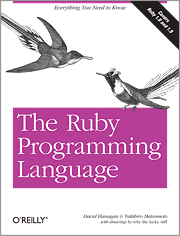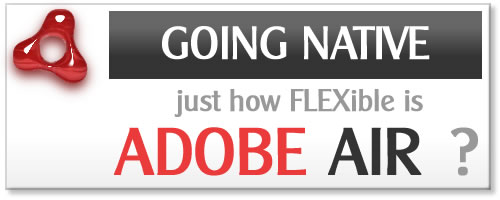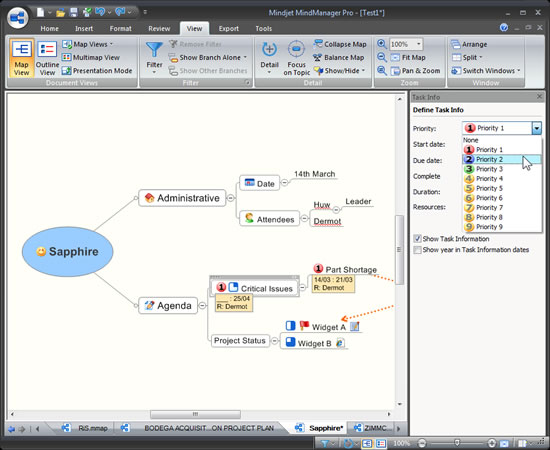Dermot Hogan looks at what’s required to build your very own computer language using two new – and remarkable – tools. Microsoft’s Dynamic Language Runtime and ANTLR3 by Terrence Parr from the University of San Francisco.
Monday 18 August 2008

It’s a been a couple of months since I last looked at the DLR and ANTLR3 – somewhat longer than I’d anticipated. There are two reasons really – one is that I’ve been busy (ok – that’s not a reason, it’s an excuse: the dog ate my homework, Miss). The other is that both ANTLR and the DLR have been evolving and, with the DLR, at a rapid rate.
Book Review
Thursday 14 August 2008
Protect Your Privacy
Saturday 9 August 2008
Howard Fosdick has just released the latest version of his excellent eBook, ‘How to Secure Your Windows Computer and Protect Your Privacy — with Free Software’.
How can you save and load different form layouts while a Delphi application is running? Huw Collingbourne didn’t know either. But he eventually figured it out…
Thursday 7 August 2008

Following a couple of years of uncertainly, the venerable Delphi Pascal-based visual programming language/environment has finally found a new home. While Delphi may not have quite such a high profile in the development community as it once had, there is no doubting that it is still a powerful tool. In this article, I’ll explain how you can use Delphi For Win32 to create on-the-fly customizable user interfaces...

The Delphi 2007 IDE
Book Review
Wednesday 23 July 2008
Modularity and Objects
Tuesday 22 July 2008
I’ve just posted an article about some of the mysteries of encapsulation and why this means different things to different people.
Book Review
Friday 18 July 2008
part one
Wednesday 2 July 2008
 Over the past few years I’ve been so involved with the Ruby language that I’ve been guilty of ignoring an important alternative, Python. The two languages have much in common - they are both dynamic, object oriented languages with a simple syntax far removed from the ‘curly-bracket’ C-like languages which are so dominant. In this new series, I plan to explore the basics of the Python language. If you are interested, you may want to follow my progress...
Over the past few years I’ve been so involved with the Ruby language that I’ve been guilty of ignoring an important alternative, Python. The two languages have much in common - they are both dynamic, object oriented languages with a simple syntax far removed from the ‘curly-bracket’ C-like languages which are so dominant. In this new series, I plan to explore the basics of the Python language. If you are interested, you may want to follow my progress...
Book Review
Tuesday 17 June 2008
 $74.95 / £39.95
$74.95 / £39.95
By Matthew Strawbridge
Pages: 628
Software Reference Ltd: http://www.swref.com
ISBN: 978 0 9554614 1 5
Book Review
Thursday 12 June 2008

$29.99 / £18.50
By Harold Davis
Pages: 176
O’Reilly http://www.oreilly.com
ISBN 10: 0-596-52988-0 | ISBN 13: 9780596529888
Yup, It’s the third birthday of Bitwise! So what’s changed...?
Sunday 1 June 2008

Well, time really has flown! The first issue Bitwise went online in June, 2005. At that time, I was recovering from a long (10 year) stint as the Delphi programming columnist for PC Plus magazine in the UK - which may explain why the content of that first issue of Bitwise had a decidedly Pascal-like flavour.
Book Review
Tuesday 27 May 2008
Ruby Programming Tutorial
Thursday 15 May 2008
I guess quite a few Bitwise readers (in the UK, at any rate) know me best for the innumerable programming tutorials which I’ve written over the years in PC Plus, PC Pro, PC Answers, PC Magazine, Computer Shopper and various other magazines...
Ruby Reference Book
Friday 9 May 2008
 The Ruby Programming Language - $39.99 (£24.99)
The Ruby Programming Language - $39.99 (£24.99)
by David Flanagan and Yukihiro Matsumoto
O’Reilly http://www.oreilly.com/
444 pp.
ISBN 10: 0-596-51617-7
ISBN 13: 9780596516178
Borland Developer Tools is Borland No More...
Wednesday 7 May 2008
The Developer Tools group of Borland - the people who make tools such as JBuilder and Delphi - will henceforth be a part of Embarcadero Technologies, a cross platform database company.
Is Adobe’s AIR really the best choice for desktop applications?
Monday 5 May 2008

RIA (Rich Internet Applications) is a fashionable acronym which has now been reversed by Adobe to create AIR (Adobe Integrated Runtime) - a collection of code and utilities aimed at creating desktop applications using a mix of technologies (HTML, XML, ActionScript and Flash) which had hitherto been confined (well, mostly) to web browsers.
Um, How Polite Would You Like The Answer To Be...?
Tuesday 29 April 2008
After all this time I still don’t know my way around the ‘ribbon’ in Microsoft Word 2007...

As Olivia Newton-John says (more or less) Let’s get Visual!
Monday 21 April 2008
When I began programming with the Ruby language and the Rails web framework ( ‘Ruby On Rails’), a few years ago, the first thing I tried to find was a visual IDE. I’d assumed that every programming language worth its salt had one of those these days. I searched and I searched but none could I find.

Visual Ajax Builder
Thursday 17 April 2008
Just when you think you’ve seen everything there is to see in application development tools, along comes Morfik! In some ways, Morfik’s visual Ajax IDE, WebOS AppsBuilder, is bucking all the trends. All the most fashionable web developers tell me that the best tools for application development are a simple text editor and a command prompt. Morfik’s IDE is way out there at the other extreme - it lets you create Ajax applications by dragging, dropping, coding and debugging all inside an elegant ‘visual’ environment.

Brainstorming and project planning
Monday 14 April 2008
Mindjet MindManager 7
$349/£199 (other editions from $99/£49)
Free Trial Available
http://www.mindjet.com/
“MindManager Pro 7 enables companies and individuals to work smarter, think creatively and save time by revolutionizing the visual capture and management of information.” - Call me a cynic, but when I hear that some piece of software is going to make me a better, smarter, more productive human being, my first inclination is to put it back in the box and reach for the snake-oil.

More..
|
|
|
|
|
280
|
|
|
|
|